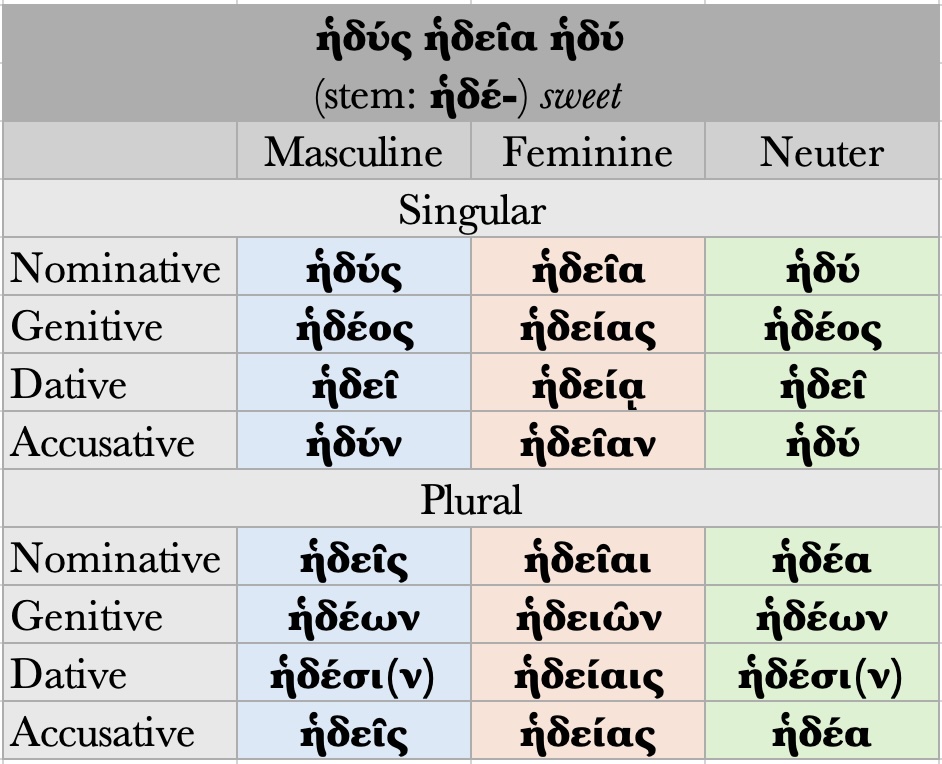31.8 Adjectives in –ύς –εῖα –ύ
Adjectives with this set of endings are perhaps the most challenging when encountered for the first time. As you study this inflection pattern, though, note the following:
- Remember that if the stem of the adjective ends in –ε, –ι or –ρ, ᾱ appears instead of η in feminine singular forms. The use of –ᾱ– affects only the GENITIVE and DATIVE SINGULAR for these adjectives, however. The nominative and accusative singular already have short –ᾰ-, matching the pattern of all 3-1-3 adjectives.
- In the nominative and accusative singular of the masculine and neuter, the stem ends in –υ.
- The masculine accusative singular ending is –ν.
- The masculine nominative and accusative plural are identical: see, e.g., ἡδεῖς.
- Not all of the expected contractions occur: see, e.g., ἡδέος, ἡδέων, and ἡδέα.
- All adjectives in this declension family share the same persistent accent.
Charts JPG


